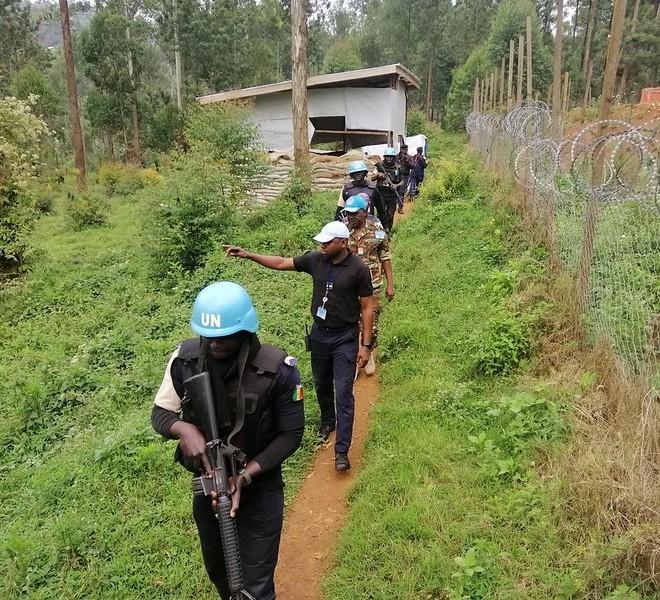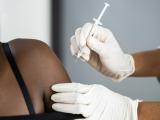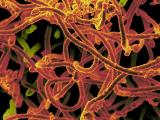The World Health Organization's (WHO's) online Ebola dashboard shows 3 newly confirmed cases today in the Democratic Republic of the Congo (DRC), raising the outbreak total to 3,409.
Officials also noted 1 new fatality, which boosts the death toll to 2,236. Officials are still investigating 516 suspected cases.
Meanwhile, Doctors Without Borders (MSF) warned that the outbreak is still out of control. And in research news, a study today explores the link between ongoing violence in the outbreak region and virus transmissibility.
Key transmission chain
In a new disease outbreak news report, the WHO said all 14 cases reported in the past week were registered contacts prior to symptom onset and had epidemiologic links to the transmission chain that originated from Aloya health area in Mabalako health zone.
The WHO also said that in the past 3 weeks only 8% of confirmed fatalities (3 of 36) occurred in the community, outside of Ebola treatment centers. From these 3 community deaths, 15 additional cases occurred. Community deaths are known to add to disease spread.
The WHO, however, highlighted some signs of progress.
"It has been 20 months since the outbreak was first declared on 8 May 2018. The number of cases reported per week is lower than the period from March to September 2019," the WHO said. "However, there are several health areas which are difficult to reach due to insecurity, including Mandima Health Zone, where there are rumours of several community deaths in Lwemba Health Area."
MSF: Outbreak still out of control
In a statement yesterday, MSF noted the 20-month mark of the DRC battle, saying the outbreak is still not under control as violence has increased in the region.
"While fewer people have been confirmed to have Ebola in recent weeks, the epidemiological data show that further efforts are needed to improve the response," MSF said. "New Ebola patients are confirmed with an average delay of five days from the onset of symptoms to diagnosis—a time in which they are infectious to others and miss out on the benefits of receiving early treatment that would improve their chances of survival."
MSF said the overall rate of transmission appeared to slow in November—averaging 10 new cases per week compared with September's weekly average of 40. But violence in December reignited the outbreak, bringing the average cases per week to 24, and now 14.
Violence has also hindered vaccination efforts. MSF said that in the last week of November, only 376 people were vaccinated, compared with an average of 3,000 people per week in October in the Biakato Mines region.
In late December, MSF pulled out staff in various parts of North Kivu and Ituri provinces because of insecurity threats.
Earlier this week, two volunteers from the DRC Red Cross were seriously injured following an attack during a safe and dignified burial of a suspected Ebola case near Mambasa, the International Federation of Red Cross and Red Crescent Societies (IFRC) reported yesterday. The volunteers are hospitalized.
"While we experienced an overall improvement in community's acceptance of burials, this attack underscores why we cannot become complacent," said Nicole Fassina, the IFRC's Ebola operations manager. "The Red Cross will continue to engage and involve communities in the Ebola response if we want to bring this outbreak to end."
Link between violence, virus spread
Today in Eurosurveillance, experts describe the link between the insecurity events that have plagued the DRC during this, the world's second-largest Ebola outbreak, and transmissibility of the virus.
To quantify how violent events have fueled the outbreak, the study authors surveyed activity around the Butembo coordination hub, which has been a main hot spot of the outbreak. They said Butembo has seen three distinct phases of Ebola activity, each defined by violence, when transmissibility rose from a baseline median of 1.1 to 1.22 during the disruptions.
"Our results suggest this context played a major disruptive role in [Ebola] epidemic control and potentially led to hundreds of additional cases in the affected communities," they concluded. "It is also likely that insecurity during the disrupted phase led to an increase in under-reporting, either through the weakening of passive surveillance (other clinics through which Ebola cases may have transited were also attacked) or the disruption of active case finding."
See also:
WHO Ebola dashboard
Jan 16 WHO outbreak report
Jan 15 MSF report
Jan 15 IFRC statement
Jan 16 Eurosurveillance study




















